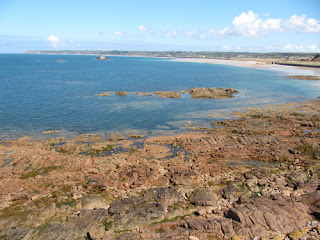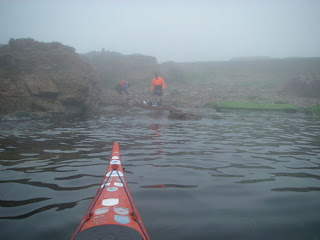I have spent some time producing a comprehensive list of the sea kayaking, and other paddling books, which are in my collection and so it is interesting to consider which books I would recommend to people who are interested in the development of our sport. This is my selection of 5 books which I consider to be essential reading. Please feel free to disagree and suggest alternatives:
Sea Canoeing by Derek Hutchinson 1976: For me this was a book that inspired a generation of paddlers and it was one of the first titles which was specifically about the aspects of canoeing and kayaking that I was interested in. Derek is recognized by many as the father of modern sea kayaking due to his ground breaking trips and kayak designs. This book gave me information on navigation, surfing etc. There have been many more books published since but this was the first of its type.
The Dreamtime Voyage by Paul Caffyn 1994: This is the definitive expedition book. I had read all of Paul Caffyn's previous books and although they described significant achievements none of them grabbed the readers like the circumnavigation of Australia. It is testimony to one of the finest sea kayaking achievements of all time.
Argonauts of the Western Isles by Robin Lloyd-Jones 1989: This book could almost have been written by anyone of us, if we were accomplished authors. It is adventures in local waters, sea kayaking off the west coast of Scotland with friends. The book was updated several years ago and is still a worthy read.
Water and Sky by Alan Kesselheim 1989: This follows the journey along the Athabsca by Kessleheim and his wife. Sub-titled "Reflections of a Northern Year" the writing captures the hardships and delights of living in the far north. In addition the conflicts between the modern world and traditional native communities are examined. This is a delightful book which goes far beyond the paddling.
Sea Kayaking by John Dowd 1981: This was quite a controversial book in the UK when it was published due to some of the more extreme comments. I bought my copy at a Crystal Palace Canoe Exhibition in the early 1980's and quickly went through the book from cover to cover several times. There was so much in here that wasn't in Derek's book, they complemented each other nicely. It has been updated several times, I think that I have all the editions, but I still like dipping into the first one.
It is surprising how many sea kayaking books are now available, it is just a matter of deciding which are the more interesting, informative etc.


















































